June 15, 2025 | 09:50 GMT +7
June 15, 2025 | 09:50 GMT +7
Hotline: 0913.378.918
June 15, 2025 | 09:50 GMT +7
Hotline: 0913.378.918

Newly picked coral breeds. Photo: Duong Dinh Tuong.
To restore coral, scientists from the Research Institute for Marine Fisheries had to wear diving equipment and use a hammer to fix the substrate with concrete nails. Next, they used two drawstrings to tie the same piece of the coral breed to the growing media so they had the largest contiguous area with the bottom.
Corals are marine animals that exist in the form of tiny polyps, secreting calcium carbonate to create a rigid skeleton, but they have many similarities with plants. When transplanted to the seabed for approximately 1-2 months, corals will gradually take root and sprout. Then the more waves they endure, the stronger they grow and the fatter body.
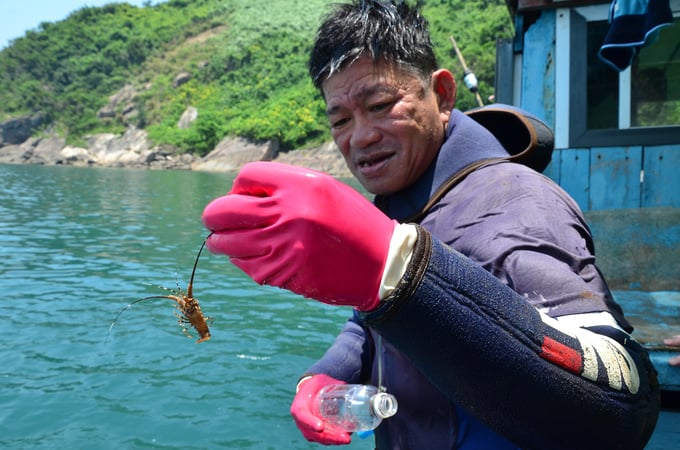
Diver with baby lobster. Photo: Cong Dien.
At Bai Ca, which belongs to Hai Van - Son Cha area, Thua Thien - Hue, the sea is calm this season. But in many other places, scientists must plant coral during the rough sea season.
Waves push divers forward tens of meters and then roll them back to almost exactly where they were. The hammer raised to close but still missed dozens of times. The waves came one after another. Even if they clung to the rock, human strength could not defeat the force of water. At the bottom of the sea, but they still got seasick as usual.
Unlike the terrestrial forest with many sounds, when diving deep under the sea, only the sound of ships running and breathing can be heard, but it is challenging to identify the sound source in the water. As a precaution against divers blasting in the sea, when the team finished planting coral, a scientist climbed a nearby cliff and painted large letters in paint "Coral conservation area".
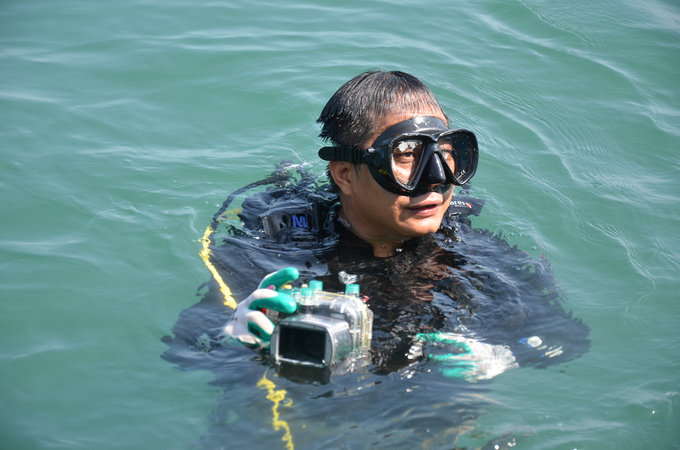
Prepare the underwater camera. Photo: Duong Dinh Tuong.
M.Sc. Dinh Thanh Dat, an officer of the Research Institute for Marine Fisheries, shared that in the past, marine conservation was still a strange concept in our country. It was not until about 2005, when marine conservation movements from the world flooded back, that Vietnam's marine research institutes began to conduct biodiversity assessments on the island's edge.
Programs to collect data on fish resources in coral reefs, corals, seaweeds, seagrasses, and benthic animals... started to be carried out, serving as a scientific basis for establishing marine protected areas.
The seabed in the Bai Ca area is empty. Clip: The Research Institute for Marine Fisheries.
A small program surveys about 3-4 islands. The more extensive program must cover ten or more islands. Each small island, like Con Co, Hon Me, Hon Mat takes 5-6 days, while big island like Cat Ba, Co To, and Phu Quoc lasts up to 10 days.
The same marine conservation research, but each officer undertakes a particular job. Anh Dat specializes in seaweed and seagrass. Mr. Hieu specializes in corals. Anh Tuan specializes in benthic animals. Others specialize in reef fish and crustaceans.
Their task is to dive to the bottom of the sea to observe. In hand are a plastic board and a pencil to fill in the data sheet, including the number of species, number of individuals, and size then take pictures and film for data.
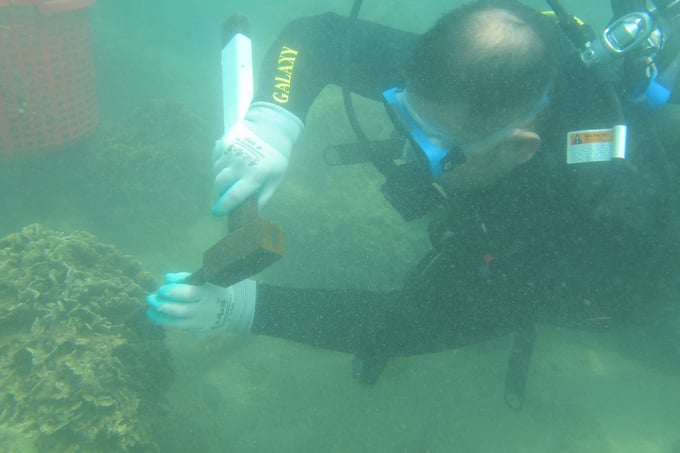
Separation of corals for breeding. Photo: The Research Institute for Marine Fisheries.
According to Mr. Dat, about ten years ago, when diving into the waters of Ly Son Island (Quang Ngai province), almost every rock hole had cotton lobster, grouper, and red snapper. Or at Bach Long Vi island (Hai Phong city), groupers and eels are numerous. In particular, corals grow in layers like a jungle under the sea.
However, the marine environment changes completely within only 3-4 years. In the past, swimming about 100m would be 10-15 big groupers. Now the number is only 1-2, even none.
Also, on Bach Long Vi island, from 2012 to 2015, the Research Institute for Marine Fisheries had a ministerial-level project on the artificial reproduction of abalone. Mr. Bui Minh Tuan - one of the people who carried out that project, recalled that in 2014, Bach Long Vi still had a lot of seaweed, but by 2015 it was gone.

Fixing the substrate frame for growing corals. Photo: The Research Institute for Marine Fisheries.
To recover the abalone, scientists have to buy yellow seaweed in ponds, then convert it to food for abalone. The study aims to artificially reproduce abalone and release and restore resources in Bach Long Vi. However, there is no seaweed, so it is difficult for abalone to grow.
In addition to abalone, black sea cucumber, and pearl mussels, there will also be a severe decrease in numbers in 2020, 2021. Only corals are less affected by direct exploitation because this species is inedible and cannot be sold.
When alive, branched corals have rigid bodies, but when they die, they are quickly broken by the waves into small pieces the size of a finger and then even more negligible. Corals act as bushes in mangroves to give fish, crustaceans, and mollusks a place to feed and hide.
Translated by Ha Phuc
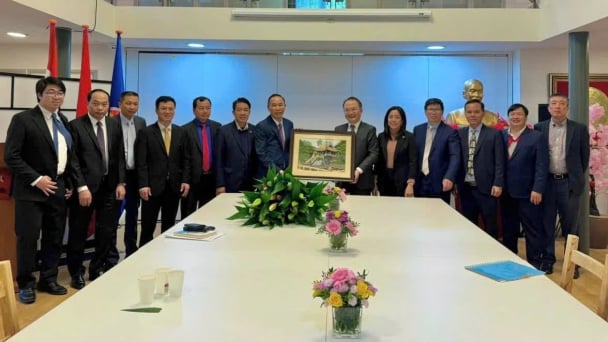
(VAN) The working delegation from the Ministry of Agriculture and Environment conducted an important trip to the Netherlands to strengthen strategic partnerships and sustainable development in the agricultural sector.
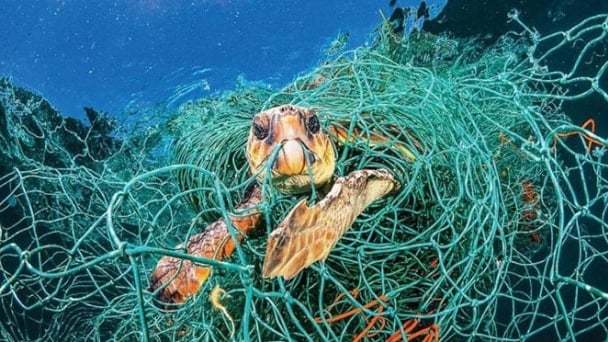
(VAN) The letter ‘A Plea from the Ocean’ not only evokes emotion but also awakens the human conscience to the responsibility of protecting life on Earth.

(VAN) The Department of Agriculture in South Africa has announced the country’s first mass vaccination of poultry to prevent local birds from contracting avian influenza.

(VAN) Establishment of the Mekong Delta Regional Agricultural Linkage Center, aiming for a closed value chain, deep processing, trading platforms, and international market connectivity.

(VAN) Gia Lai province has recently recorded 460 rare species of animals and plants, contributing to forest conservation and biodiversity planning in the region.

(VAN) Ms. Caroline Beresford, New Zealand Ambassador to Vietnam, expressed confidence that agricultural cooperation between Vietnam and New Zealand will develop sustainably, be climate-resilient, and promote gender equality.

(VAN) Vietnam reaffirms its commitment to international cooperation in fostering sustainable and responsible fisheries while ensuring resilient livelihoods for small-scale fishing communities.